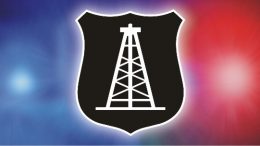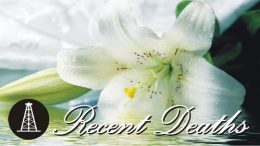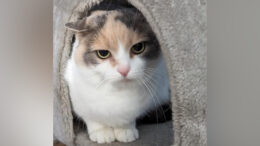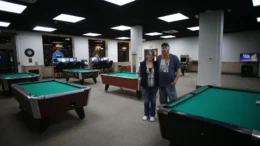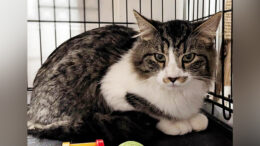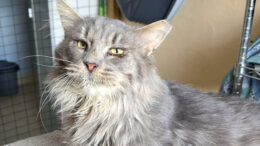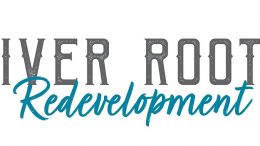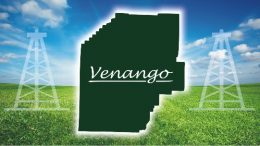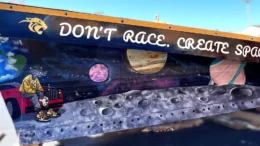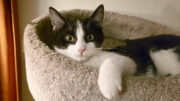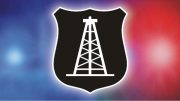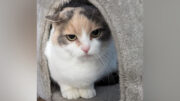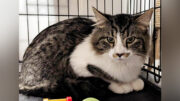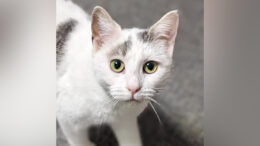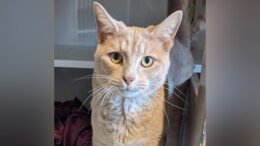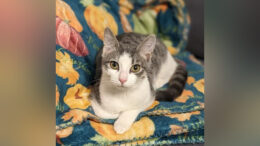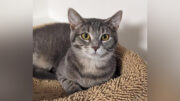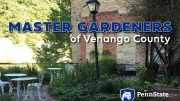PITTSBURGH (AP) — On John Plischke’s laptop, a video feed from his microscope came into focus and showed round, floating spores, along with some tube-like structures and solid chunks of the giant orangish-black fungus from which he’d just cut the sample.
From shelves that were packed with mushroom books until they leaned, he pulled a guide with photos of the lumpy fungus and illustrations of its spores to compare to what the microscope showed him. A click on his computer took a picture of what he was seeing in case he had to send it to a hospital or lab for further consultation.
“It’s an Inonotus Hispidus … People use it to dye wool; it would make you slightly sick if you ate it,” Plischke said.
But Plischke is not a scientist in the field of mushrooms, at least not officially. The 48-year-old Greensburg man who maintains rental properties for his day job is strictly an amateur mycologist, albeit one recently recognized as one of the best in the country for the work he has done finding and photographing mushrooms, educating people about them and helping to identify them in suspected poisoning cases.
Plischke began learning about mushrooms on foraging trips around Hempfield with his father, grandfather and uncle when he was 6, learning to identify a handful of edible mushrooms they could pick and eat. His interest grew from there to include finding, identifying and photographing thousands of fungus species from around North America.
“A lot of people tell me they want to learn mushrooms to eat them; if they want to eat 10 types, they think all they have to learn is 10 types,” Pliscke said. “I tell them they have to learn 40 or 50 mushrooms because they have to learn the five lookalikes for each type of mushroom they want to eat so they don’t get poisoned.”
His interest led him to seek out other fungus hunters. When he found no local organizations, he started the Western Pennsylvania Mushroom Club, which now has more than 650 members and holds weekly walks around the region.
At their Northwoods Foray Sept. 9 in Cable, Wis., the North American Mycological Association presented Plischke with its highest honor, the Gary Lincoff Award for Contributions to Amateur Mycology.
Plischke’s award nomination noted that he had written four books on mushrooms and their identification — he also said he was collaborating on a fifth that would delve deeper into the science and DNA. He keeps cards that samples get smushed into to release juices and spores, which are then sent to laboratories at Duke University for DNA analysis to assist in studies and cataloging.
He’d won national and regional awards for his photography and contributed photos to more than 20 books — with the perk, he noted, that he usually got a free copy for his own library. He regularly leads mushroom forays for the local club and NAMA, both regionally and at gatherings around the U.S. and Canada.
With the Western Pennsylvania Mushroom Club, he successfully lobbied to open state parks to non-commercial mushroom foraging.
As a NAMA volunteer poison identifier, he helps identify mushrooms that people, children and pets have ingested, whether they are poisonous and what the best course of treatment should be.
“During the peak mushroom season, I can get 50 to 75 calls a month,” he said.
Sometimes he only needs a picture to identify if there are more mushrooms like the suspect one; other times he might need to take samples from stomach contents — or worse, he said.
The people calling for help identifying psychedelic mushrooms are the easiest, he said, because they usually call before they eat what they’ve found.
“I’ll tell him what it is so he doesn’t get poisoned, but I won’t tell him where else to find them,” Plischke said.
His wife, Kim, caught the mushroom bug herself after spending time with him and now is among the club’s mycologists.
Her interests tended more toward the useful mushrooms — ones that can be eaten, used for medicine, boiled down into dyes or pulped to make paper. Their home was full of bags of dried bolete mushrooms, with giant jars of morels and black trumpets. Puff balls, the round mushrooms sometimes sprouting on lawns, could be sliced thin, boiled and used like pasta if they were white all the way through, she said. Other specimens were set aside to dry for later use.
“We don’t eat a lot of them at home; we save them and take them with us to different events,” Kim Plischke said.
Though some mushroom hunters jealously guard their best spots for foraging, the Plischkes are willing to lead groups to some of theirs — though they won’t announce the destination until everyone has gotten together the day of the foray, so the sites don’t get plundered beforehand. For John Plischke, it was about sharing his love and enthusiasm for the wild world of mushrooms.
“We give these all away. I don’t sell anything,” he said.




